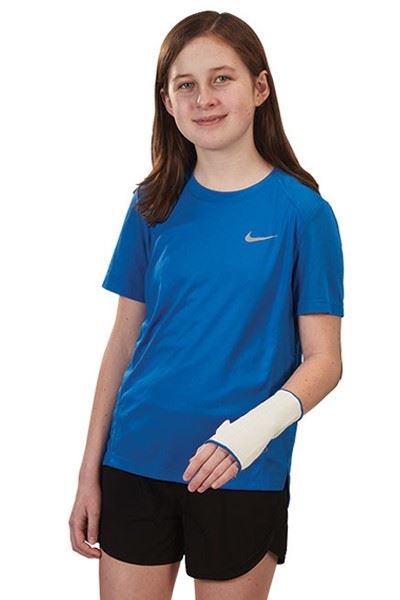-
Home
-
Pediatric Orthotics: Enhancing Mobility and Support for Children
Pediatric Orthotics: Enhancing Mobility and Support for Children
August 21, 2024
 Pediatric orthotics play a crucial role when managing various musculoskeletal conditions in children. These devices are designed to support, align, or correct the function of the musculoskeletal system, improving a child's ability to move, reducing pain, and preventing further deformities. This article provides an overview of pediatric orthotics, including their types, indications, benefits, and considerations for use.
Pediatric orthotics play a crucial role when managing various musculoskeletal conditions in children. These devices are designed to support, align, or correct the function of the musculoskeletal system, improving a child's ability to move, reducing pain, and preventing further deformities. This article provides an overview of pediatric orthotics, including their types, indications, benefits, and considerations for use.
Types of Pediatric Orthotics
Pediatric orthotics encompass a broad range of devices, each tailored to address specific needs and body parts. There are many off-the-shelf solutions available, but some conditions or individuals may require custom devices or custom fabrication. The most common types include foot, ankle, knee, spinal, and upper limb orthotics.
- Foot Orthotics (FOs) are designed to correct foot deformities, improve foot function, and provide cushioning. Commonly used for flat feet, toe walking, and other biomechanical abnormalities.
- Ankle-Foot Orthotics (AFOs) support the ankle and foot, helping to manage conditions like cerebral palsy, spina bifida, and clubfoot. AFOs can be rigid or flexible, depending on the level of support needed.
- Knee-Ankle-Foot Orthotics (KAFOs) extend from the thigh to the foot, offering support to the knee, ankle, and foot. Used for children with more severe lower limb weakness or paralysis, such as those with muscular dystrophy.
- Spinal Orthotics include devices like thoracolumbosacral orthoses (TLSOs) and cervical collars, which stabilize the spine. Often prescribed for scoliosis, spinal fractures, or other spinal deformities.
- Upper Limb Orthotics support or correct deformities in the hand, wrist, or arm. Useful in conditions like cerebral palsy, brachial plexus injuries, or post-surgical rehabilitation.
Benefits of Pediatric Orthotics
The benefits of pediatric orthotics extend far beyond mere physical support, playing a vital role in the overall well-being and development of children with musculoskeletal conditions. These devices offer numerous benefits, including improved mobility, pain relief, prevention of deformities, and enhanced quality of life.
- Improved Mobility: Orthotics can enhance a child's ability to walk, run, and perform daily activities by providing the necessary support and alignment.
- Pain Relief: By correcting abnormal gait patterns or relieving pressure on joints, orthotics can significantly reduce pain and discomfort.
- Prevention of Deformities: Early use of orthotics can prevent the progression of musculoskeletal deformities, ensuring better long-term outcomes.
- Enhanced Quality of Life: With improved mobility and reduced pain, children can participate more fully in social, educational, and recreational activities.
Considerations When Using Pediatric Orthotics
Unlike adults, children's bodies are in a constant state of growth and development, making it essential to regularly reassess and adjust orthotic interventions. A holistic approach that includes considerations of growth, comfort, aesthetics, activity level, and education is crucial in maximizing the benefits of pediatric orthotics while minimizing any potential challenges.
- Growth: Children are constantly growing, so adjustable orthotic devices are ideal. Non-adjustable devices will need to be replaced as the child develops.
- Comfort: Ensuring that the orthotic device is comfortable is essential for compliance. Materials should be lightweight, breathable, and non-irritating.
- Aesthetics: Children may be self-conscious about wearing orthotics. Designs that are visually appealing or can be worn discreetly can improve acceptance.
- Activity Level: The orthotic must be appropriate for the child's level of activity. Active children may require more durable materials and designs.
- Family and Child Education: Education on the use, care, and purpose of the orthotic is vital to ensure proper use and to set realistic expectations for outcomes.
Pediatric orthotics are an invaluable tool in the management of a wide range of musculoskeletal conditions in children. By providing support, correcting deformities, and improving function, these devices can greatly enhance a child's mobility, independence, and overall quality of life. Collaboration between healthcare providers, families, and orthotic specialists is essential to ensure that each child receives the most appropriate and effective orthotic intervention tailored to their unique needs.
Want to learn more? Explore our additional resources on pediatric splints and braces: